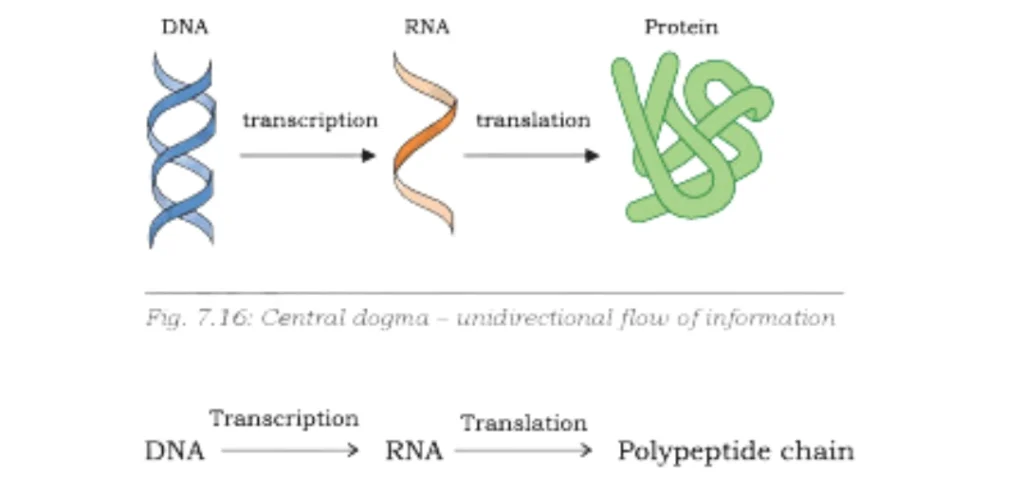India-Maldives – Currency Swap Agreement (Prelims – Economy, IR)

RBI, Maldives Monetary Authority sign $400 mn currency swap pact on 7th October 2024
Under the SAARC Currency Swap Framework for 2024-2027, the Reserve Bank of India (RBI) announced entering into a currency swap agreement with the Maldives Monetary Authority (MMA), Under the agreement, the MMA is eligible for financing support from the RBI amounting to USD 400 million under the US Dollar/ Euro Swap Window and INR 30 billion under the INR Swap Window. The agreement would be valid till June 18, 2027.
The SAARC Currency Swap Framework was designed to provide short-term foreign exchange liquidity to SAARC member nations facing balance of payments difficulties or foreign currency shortages, serving as a stopgap until long-term financing is arranged
Seeking to strengthen bilateral ties, India and the Maldives on inked a currency swap agreement, a move that would help the archipelago nation overcome foreign exchange reserve issues
About The SAARC Currency Swap Arrangement
The SAARC Currency Swap Arrangement was first introduced on November 15, 2012.
The key features of the new framework for 2024-2027 include a multilateral currency swap arrangement amounting to $2 billion. A separate INR swap window with various concessions. A total corpus of Rs 25000 crore for rupee support. Continued availability of swap arrangements in US dollars and euros. Bilateral agreements between the RBI and the central banks of SAARC countries. Under this arrangement, central banks of SAARC member countries can enter into bilateral agreements with the RBI. These agreements allow them to swap their currencies for Indian Rupees, US dollars, or euros, according to the predetermined terms and conditions. This provides immediate liquidity support without the risks associated with exchange rate fluctuations
Caste bias, segregation in prisons violate dignity: Supreme Court (Prelims-Polity)

Why in News?
A three-judge Bench headed by Chief Justice of India D.Y. Chandrachud struck down several provisions in State prison manuals that reinforced caste differences, for being violative of the fundamental rights of prisoners.
Background
- The Supreme Court was hearing a Public Interest Litigation (PIL) petition filed by journalist Sukanya Shantha highlighting provisions in prison manuals in States such as Uttar Pradesh, West Bengal, Odisha, Maharashtra, Tamil Nadu, and Kerala that legitimised caste inequalities.
- Citing examples from various prison manuals, the court highlighted that caste-based division of labour in prisons is “unconstitutional”.
Prison Manual- Violation of Fundamental Rights
The state prison manuals are violative of Articles 14, 15, 17, 21, and 23 of the Constitution of India.
- Right to Equality (Article 14): Segregating prisoners on the basis of caste would reinforce caste differences. Differentiating between inmates based on “habit,” “custom,” “superior mode of living,” and “natural tendency to escape” offends principles of substantive equality.
- Right Against Discrimination(Article 15): By assigning cleaning and sweeping work to the marginalised castes, while allowing the high castes to do cooking, is an instance of direct discrimination under Article 15(1)
- Abolition of Untouchability(Article 17): Food being cooked by members of a suitable caste and low-grade duties exclusively performed by communities accustomed to such work, constitute untouchability prohibited under Article 17.
- Right to Life with Dignity (Article 21): Prison Manuals restricting the reformation of prisoners from marginalised communities violate the Right to Life under Article 21.
- Prohibition of Forced Labour (Article 23): Imposing labour or work, which is considered impure or low-grade, upon the members of marginalised communities amounts to forced labour under Article 23.
The Court has passed the following directions:
1. All States and Union Territories are directed to revise their Prison Manuals/Rules within 3 months of this judgment.
2. The Union Government is directed to make necessary changes to address caste-based discrimination in the Model Prison Manual 2016 and the Model Prisons and Correctional Services Act, 2013 within 3 months of this judgment.
3. The “caste” column and any reference to caste in the undertrial and/or convict prisoners register inside the prison shall be deleted.
5. Reference to “habitual offenders” in the Prison Manual/Model Prison Manual shall be as per the definition provided in the respective State legislations.
The Nobel Prize in Physiology or Medicine 2024 for the discovery of microRNA (Prelims & Mains- Science & Technology)

Why in News?
The Nobel Prize in Physiology or Medicine 2024 was awarded jointly to Victor Ambros and Gary Ruvkun “for the discovery of microRNA and its role in post-transcriptional gene regulation“.
What is Gene Expression?
Every organism from bacteria to human beings has the same basic mechanism of expression of genes.
The information encoded in the sequence of the four bases of DNA directs the assembly of amino acids in the correct order, so as to produce the protein for which the given DNA sequence is responsible.
The DNA inherited by an organism leads to specific traits by directing the synthesis of specific proteins. In other words, proteins are the link between genotype and phenotype.
This unidirectional flow of information from DNA to proteins involves two steps, i.e., transcription and translation and is called central dogma.

The process of copying genetic information from one strand of the DNA into RNA is termed transcription.
During transcription, the genetic information is transferred from DNA to mRNA.
In the second step of central dogma, i.e., translation the information is transferred from mRNA to polypeptide chain.
What are microRNAs?
MicroRNAs (miRNAs) are short non-coding RNAs that regulate gene expression and target essentially all coding transcripts.
➤Function: miRNAs regulate gene expression by binding to mRNA molecules and inhibiting their translation into proteins. This process, known as post-transcriptional gene regulation, allows miRNAs to control the amount of protein that is produced by specific mRNAs.
➤Mechanism: miRNAs bind to complementary sequences within the mRNA, causing the mRNA to be degraded or preventing its translation, effectively silencing the gene it represents.
➤Regulation by miRNA: After transcription, miRNAs can bind to the mRNA and inhibit protein production, adding an extra layer of regulation to gene expression.
These discoveries “paved the way for a broader understanding of RNA biology, and the subsequent discovery of a whole range of mechanisms of post-transcriptional gene regulation that are now recognised as an essential biological principle by which organisms realise a diverse set of responses to different stimuli in a cell-specific manner,”
“MicroRNAs help us to understand a whole variety of disease conditions in which disease-causing proteins are inappropriately expressed by cells, including cancer, in the hope that they will become targets for future therapies and cures,”
Applications of miRNA Research
➤Gene Regulation: miRNAs fine-tune gene expression, allowing for complex regulation of genes that lead to diverse cell types despite having similar genetic information.
➤Cancer: Dysregulated miRNA activity can lead to abnormal protein production, contributing to diseases like cancer. Understanding miRNA regulation can potentially offer new pathways for cancer therapies.
➤Genetic Disorders: Mutations in miRNA-related genes can cause diseases such as congenital hearing loss, eye disorders, and skeletal conditions.
➤Drug Development: While there are currently no clear clinical applications, research into miRNAs may pave the way for therapeutic interventions targeting miRNA pathways.
Indian wild ass population increases by 26% in five years (Prelims- Environment)
Why in News?
As per the 10th Wild Ass Population Estimation (WAPE) conducted by the Gujarat government earlier this year , the population of Indian wild asses(Khur ) in Gujarat has raised by 26.14% estimated at 7,672 . In the last WAPE, done in 2020, the population was estimated at 6,082.
INDIAN WILD ASS (Equus hemionus khur)
The species inhabits open dry deciduous forests. The species is identified by the presence of four horns present only in adult males.
Distribution
The historical distribution of the species extended across the arid zone of the northwestern Indian subcontinent; however, the present distribution is restricted to the Little Rann of Kutch (LRK) in Gujarat.
The Khur presently have expanded their range from beyond LRK to the Rajasthan and Pakistan borders in the north and west and Nalsarovar Sanctuary and Bhal areas of Gujarat along with an increase in their population.
Feeding habits
They are herbivores feeding on grasses during monsoon and winter. During summer they browse on Prosopis pods and leaves (Prosopis juliflora an exotic thorny shrub) . They are primarily browsers preferring nutrient-rich forage.
Wild Ass need to drink water at least once during the day.
| What Is The Difference Between Browsing And Grazing?Grazing refers to the process of animals feeding on the vegetation that grows near the ground such as grass and any other low-growing vegetation. Examples of grazers include sheep, zebra, rabbit, cattle, giant panda, Browsing is the type of feeding whereby herbivores eat high-growing plants such as leaves, the bark of trees, and shrubs among others. Examples of browsers are white-tailed deer, goats, giraffe, Siberian ibex, alpine ibex, and Sulaiman markhor deer, among others |
Social organisation and behaviour Group size in the wild ass varies. Groups consist of two primary social units, the family/breeding band consisting of multiple age classes of females, foals, yearlings and few (occasional) sub-adult males and dominant stallion and all-male groups.
The group members have weak bonds except that of female-foal bond.
Territoriality Dominant males defend territories throughout the year with territorial males excluding other males from their territory.
Reproductive behaviour: The males are polygynous and the females are polyandrous
| Trait | Range |
| Body Mass | 200- 260 kg |
| Body Length | 1.98- 2.44 m |
| Breeding | Seasonal (April- September) |
| Average number of offspring | 1 |
| Gestation Period | 339 days |
| Weaning Age | 12- 24 months |
| Age of Sexual Maturity | 3-4 years |
| Longevity (free ranging) | 12 years |
| Longevity (captivity) | 26 years |
Threats and Conservation Status The population of Khur is vulnerable to disease threats like Surra, drought, Anthropogenic activities viz. construction of the Sardar Sarovar Project, grazing pressure from increased livestock presence, salt collection and land use changes are also potent threats
They are listed as a Schedule I species in the Wildlife protection act (1972)
IUCN Status: Equus hemionus khur is listed as Near Threatened (NT)
| The Asiatic wild ass (Equus hemionus) is found throughout Central Asia ranging from Mongolia and China to Uzbekistan, Kazakhstan, Turkmenistan, Iran, India and Israel. The only large population is found in Mongolia and the other populations are fragmented and relatively small. |


